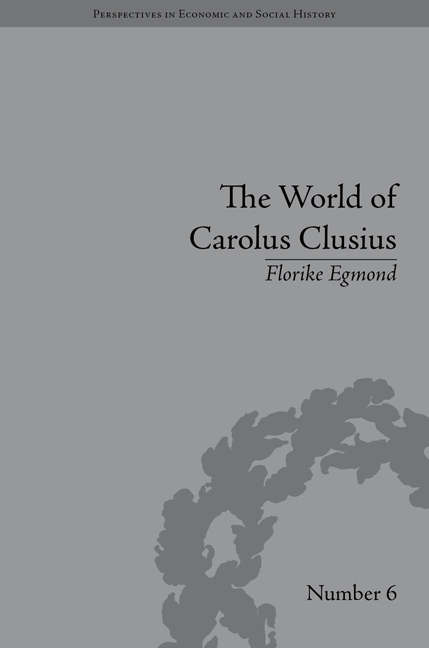Book contents
- Frontmatter
- CONTENTS
- Miscellaneous Frontmatter
- Preface
- Technical Note
- Abbreviations
- List of Figures
- Introduction
- I The Southern Netherlands
- II Habsburg Women
- III Italy
- 5 Growing Expertise: Gardeners, Collectors, Naturalists
- 6 Nature in the Garden: The Rise of the Expert Naturalist
- IV France
- V Holland
- VI Beyond Place
- Conclusion
- Notes
- Works Cited
- Index
5 - Growing Expertise: Gardeners, Collectors, Naturalists
from III - Italy
- Frontmatter
- CONTENTS
- Miscellaneous Frontmatter
- Preface
- Technical Note
- Abbreviations
- List of Figures
- Introduction
- I The Southern Netherlands
- II Habsburg Women
- III Italy
- 5 Growing Expertise: Gardeners, Collectors, Naturalists
- 6 Nature in the Garden: The Rise of the Expert Naturalist
- IV France
- V Holland
- VI Beyond Place
- Conclusion
- Notes
- Works Cited
- Index
Summary
Italy and the Botanical Renaissance
By Clusius's age Italy boasted a long horticultural tradition which went back, via the formal gardens of the Renaissance and the monastic gardens in which fruit, vegetables and medicinal plants were grown, to the pleasure and utility gardens of the ancient Romans. The early start and the long horticultural as well as academic and medicinal tradition should not, however, be taken to suggest that every single development of the Botanical Renaissance happened first in Italy and only later, under Italian influence, in the rest of Europe.
Together with Spain, Italy had been the country to receive the very earliest information about nature in the New World shortly after its discovery, but by the last quarter of the late sixteenth century many exotic novelties arrived first in Northern Europe, since the overseas routes to Asia via the African coasts were by then beginning to be controlled by the British and the Dutch. While Italian university botanical gardens (Pisa, 1544; Padua, 1545) and chairs for the teaching of medicinal botany (Rome, 1513/14 in the form of a separate lectureship; 1539, in that of a chair; Padua, 1533; and Bologna, 1534) were indeed the first in Europe, early printed and illustrated encyclopedic works on natural history appeared no later in the German-speaking world than in Italy: Mattioli's influential comments on Dioscorides first appeared in 1544, but publications by Brunfels, Bock and Fuchs came out in the 1530s and early 1540s, and Gessner's works on natural history were published from 1541 onwards.
- Type
- Chapter
- Information
- The World of Carolus ClusiusNatural History in the Making, 1550–1610, pp. 73 - 90Publisher: Pickering & ChattoFirst published in: 2014



